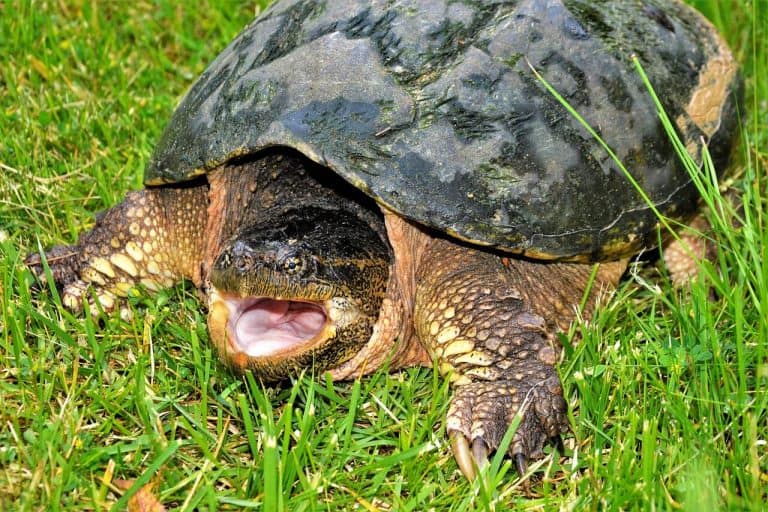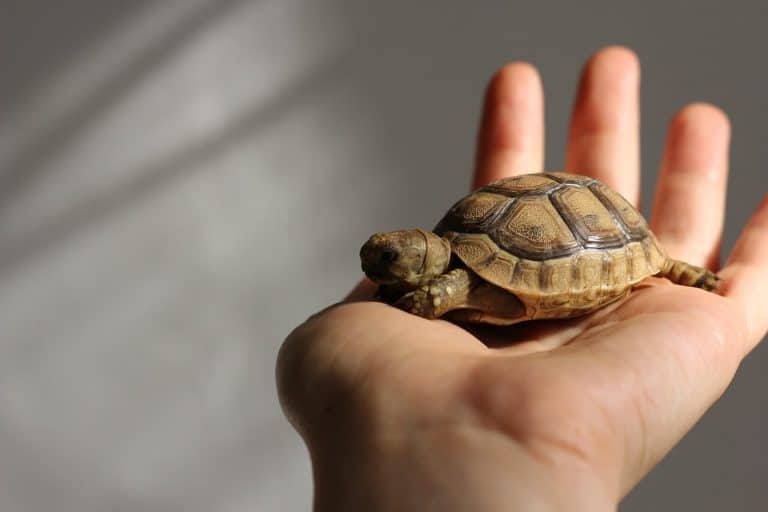Eastern Box Turtle Setup
Are you considering setting up a habitat for your eastern box turtle? Well, you’ve come to the right place! Creating the perfect environment for your turtle is crucial for its health and well-being. In this article, we’ll dive into the world of eastern box turtle setup and cover everything you need to know to create a comfortable and stimulating home for your reptilian friend.
Setting up a suitable habitat for an eastern box turtle involves creating an environment that mimics its natural surroundings. From the temperature and lighting to the substrate and decorations, every aspect of the setup contributes to the turtle’s happiness and overall quality of life. So, let’s get started and learn how to transform an enclosure into a turtle paradise!
When setting up a habitat for your eastern box turtle, it’s important to consider various factors such as temperature, humidity, lighting, and the type of substrate. By ensuring these elements are just right, you’ll be providing your turtle with a comfortable and thriving environment. So, let’s explore the world of eastern box turtle setup together and create a home that your little shelled friend will absolutely love!

Creating the Perfect Eastern Box Turtle Setup
Welcome to the world of Eastern Box Turtles! If you’re a proud owner or considering getting one of these fascinating reptiles, it’s important to create the perfect setup to ensure their health and well-being. In this article, we will guide you through the essential elements of an Eastern Box Turtle setup, from habitat requirements to lighting and temperature needs. Let’s dive in and give your turtle the perfect home!
Habitat and Enclosure
The first step in setting up your Eastern Box Turtle’s habitat is creating an adequate enclosure. A standard rule of thumb is to provide at least 10-20 square feet of space for a single adult turtle. The enclosure can be an outdoor or indoor setup, depending on your preference and the climate in your area.
For an outdoor enclosure, you should ensure that it is secure, well-ventilated, and offers protection against predators. Use a substrate such as a mix of topsoil, sand, and leaf litter to mimic the natural forest floor. Provide plenty of hiding spots such as rocks, logs, and plant cover to create a sense of security for your turtle.
If you choose an indoor setup, a large reptile terrarium or aquarium can work well. Ensure that the enclosure has a secure lid to prevent escapes and maintain proper humidity levels. You can create a naturalistic environment by using a substrate of coco coir or cypress mulch and adding various décor items like branches, plants, and hiding caves.
Heating and Lighting
Eastern Box Turtles are ectothermic, meaning they rely on external heat sources to regulate their body temperature. Providing the right heating and lighting setup is crucial for their physiological processes and overall health.
Start by installing a heat source, such as an under-tank heater or a ceramic heat emitter, to create a warm basking area in the enclosure. This area should reach temperatures between 85-90°F (29-32°C). Use a thermometer to accurately monitor the temperature and adjust the heating setup as needed.
In addition to heat, Eastern Box Turtles require access to UVB light for proper calcium metabolism and shell development. Place a UVB bulb in the enclosure, ensuring that it emits UVB rays in the appropriate range (around 10%-12%). It’s important to replace the UVB bulb every 6 to 12 months, as the output diminishes over time.
Feeding and Watering
Diet plays a crucial role in the health of Eastern Box Turtles. These omnivorous reptiles require a balanced diet consisting of both animal protein and a variety of vegetation.
Offer a mix of commercial turtle food pellets, high-quality insects like crickets and mealworms, and fresh fruits and vegetables. Greens such as kale, dandelion leaves, and collard greens are excellent choices. It’s essential to provide a calcium source, such as cuttlebone, to ensure proper shell growth and prevent calcium deficiency.
Along with a balanced diet, access to fresh water is essential for Eastern Box Turtles. Provide a shallow water dish where your turtle can soak and drink. Always make sure the water is clean and fresh, and change it daily.
Handling and Enrichment
While Eastern Box Turtles may not enjoy being handled as much as other pets, it’s essential to provide them with enrichment activities to keep them stimulated and engaged. Avoid excessive handling, as it can cause stress to these turtles.
Instead, create a stimulating environment by adding climbing structures, tunnels, and natural materials like leaves and branches. Offering a shallow pan of soil where your turtle can dig and forage for food is an excellent way to mimic their natural behavior and provide mental stimulation.
Remember, observation and respect for your Eastern Box Turtle’s natural behaviors are crucial. Give them space when needed and allow them to retreat to their hiding spots if they feel stressed or threatened.
Maintenance and Health Care
Proper maintenance and routine health care are vital for keeping your Eastern Box Turtle thriving. Regularly clean the enclosure, removing any waste or uneaten food to maintain a clean and hygienic environment.
Monitor your turtle’s weight, appetite, and behavior to ensure they are healthy. It’s essential to schedule regular check-ups with a reptile veterinarian who specializes in turtles to address any potential health issues and provide necessary vaccinations.
Additionally, provide fresh water daily, maintain appropriate temperature and humidity levels, and replace UVB bulbs as recommended by the manufacturer. Regularly inspect the enclosure for any signs of damage and ensure that all equipment is functioning correctly.
Introducing an Eastern Box Turtle to Your Home
If you’re considering adding an Eastern Box Turtle to your family, it’s important to understand the commitment and responsibility that comes with their care. Research reputable breeders or adoption agencies and ensure that the turtle you choose is healthy and free from any diseases.
Before bringing your new turtle home, set up their habitat according to the guidelines mentioned earlier. This will minimize stress during the transition and help your turtle acclimate to its new environment more easily.
Once your Eastern Box Turtle is home, make sure to give them time to settle in without disturbance. Avoid handling them excessively and allow them to explore their new surroundings at their own pace. With patience and proper care, your Eastern Box Turtle will thrive and become an interesting and cherished member of your family.
Key Takeaways: Eastern Box Turtle Setup
- An ideal eastern box turtle setup includes a spacious enclosure with both land and water areas.
- Provide hiding spots like logs and rocks to create a sense of security for the turtle.
- Keep the temperature and humidity levels within the required range for the turtle’s well-being.
- Offer a varied diet consisting of insects, fruits, vegetables, and leafy greens.
- Regularly clean and maintain the turtle’s habitat to ensure a clean and healthy living environment.
Frequently Asked Questions
Here are some frequently asked questions about setting up an environment for Eastern box turtles:
1. What type of enclosure is best for an Eastern box turtle?
The best enclosure for an Eastern box turtle is one that closely mimics its natural habitat. Ideally, it should be a spacious outdoor enclosure with a mixture of soil, grass, rocks, and plants. Make sure to provide shade, hiding spots, and a shallow water feature for drinking and soaking.
If you plan to keep the turtle indoors, a large tank or terrarium can work. Ensure it has enough space for the turtle to move around comfortably, with a mix of substrate, hiding spots, and basking areas. A temperature gradient should also be maintained, with a cooler side and a warmer basking spot under a UVB light.
2. What should I feed my Eastern box turtle?
Eastern box turtles are omnivorous, so their diet should consist of a variety of foods. Offer a mix of commercial turtle pellets, fresh vegetables like dark leafy greens and carrots, and protein sources such as earthworms, snails, and crickets. Avoid feeding them too much fruit, as it can be high in sugar.
It’s important to provide a well-balanced diet and ensure they have access to calcium supplements, as Eastern box turtles require calcium for healthy shell growth. Additionally, it’s recommended to sprinkle the food with a reptile multivitamin supplement a few times a week to make up for any potential nutritional gaps.
3. Do Eastern box turtles need UVB lighting?
Yes, Eastern box turtles require UVB lighting to synthesize vitamin D3, which is crucial for calcium absorption and overall health. UVB rays are not adequately provided by regular household lighting, so it’s essential to invest in a UVB lamp specifically designed for reptiles.
Place the UVB lamp at a safe distance and ensure the turtle has access to both UVB and a heat source within its enclosure. Remember to replace the UVB bulb every 6-12 months as it loses its effectiveness over time.
4. How should I maintain the humidity levels in an Eastern box turtle enclosure?
Eastern box turtles need a moderately humid environment to thrive. Aim for a humidity level of around 50-70% in their enclosure. To achieve this, provide a shallow water dish for the turtle to soak in, which will also help with hydration.
You can also mist the enclosure daily and maintain a substrate that retains moisture, such as coconut coir or cypress mulch. Adding live plants can also help maintain humidity levels. Regularly monitor the humidity using a hygrometer and make adjustments as needed.
5. How often should I clean the Eastern box turtle’s enclosure?
A clean enclosure is vital for the health and well-being of your Eastern box turtle. Spot clean droppings and uneaten food daily to prevent the build-up of bacteria and parasites.
The enclosure should be thoroughly cleaned every few weeks. Remove all the substrate, clean the tank or enclosure with a reptile-safe cleaner, rinse everything thoroughly, and replace with fresh substrate. Disinfect any decorations, hides, or water dishes as well. Regular cleaning and maintenance will help prevent the development of harmful bacteria and maintain a hygienic environment for your turtle.

OTIS’S NEW HOME!! (Indoor Box Turtle Habitat Build)
Summary
Setting up a proper habitat for your eastern box turtle is crucial for its well-being. First, make sure to provide a spacious enclosure with a secure lid. Include a substrate layer of soil or mulch for digging and burrowing. Create hiding spots with rocks, logs, and plants. Offer a shallow water dish for drinking and soaking. Provide a heat source and UVB lighting to mimic the turtle’s natural environment. Finally, offer a balanced diet of insects, vegetables, and fruits.
It’s important to monitor the turtle’s behavior and health regularly. Keep the enclosure clean and maintain proper humidity levels. Don’t forget to handle your turtle with care and wash your hands after touching it. By providing the right habitat and care, you can help your eastern box turtle live a happy and healthy life.

